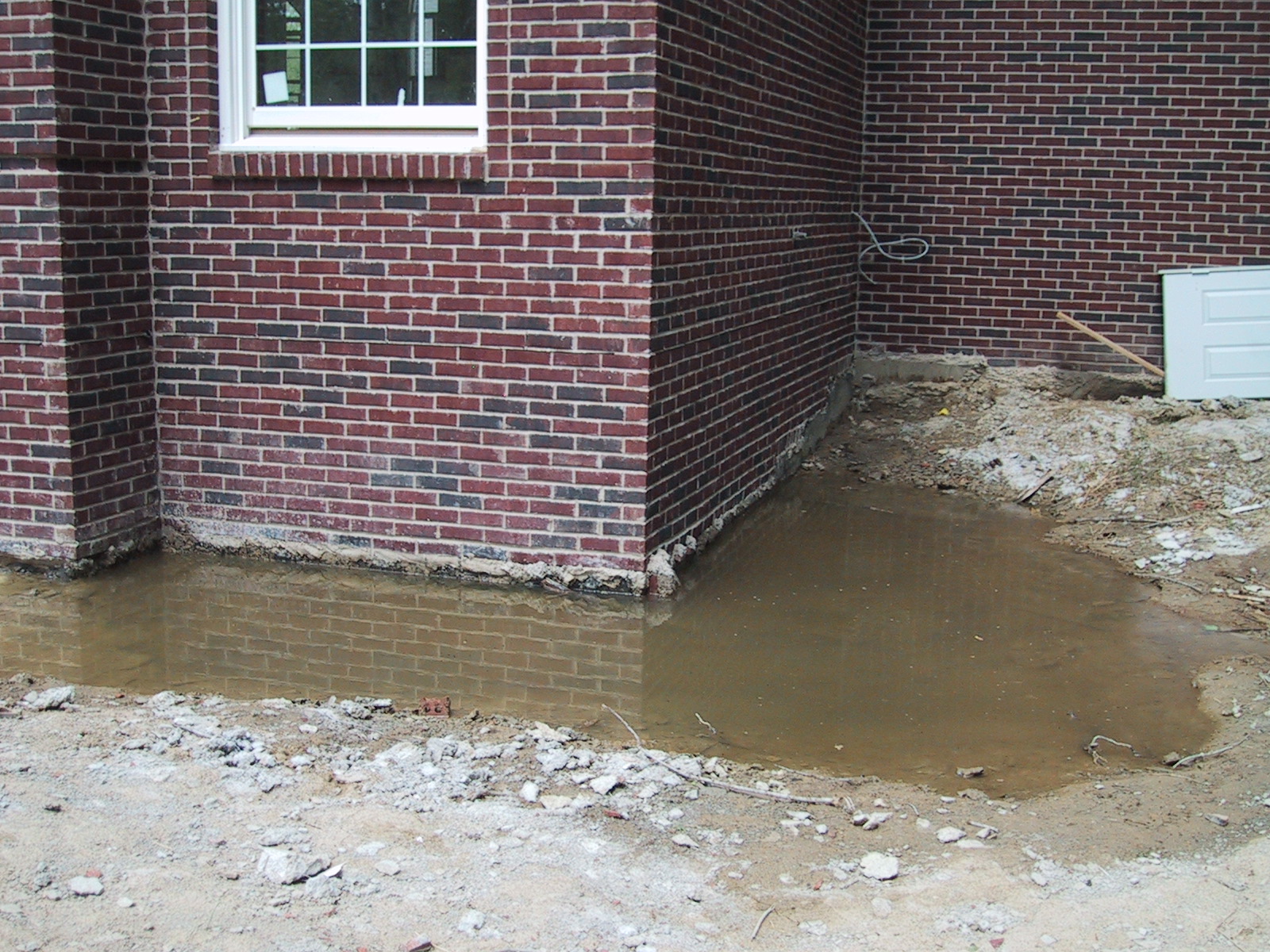Localized flooding or pooling around the foundation of a house can occur during heavy rains if the site is not designed for adequate drainage (Figure 1). This can lead to many homeowner headaches – wet, muddy, or icy conditions along entryways to the home; water entry into the home; and mold, mildew, and rot in building components. Standing water and constantly damp conditions can also attract insects and rodents.

There are several steps that builders can take to reduce the likelihood of standing water and localized flooding around the home during rainy conditions. These actions are described in the following guides:
Final Grade Slopes Away from Foundation
Patio Slabs, Porch Slabs, Walkways, and Driveways Slope Away from House
Swales, Drains, and Site Grading for Stormwater Control
Drain or Sump Pump Installed in Basements or Crawlspaces
Capillary Break Beneath Slab - Polyethylene Sheeting or Rigid Insulation
Damp-Proof Exterior Surface of Below-Grade Walls
The above guides are helpful for new and existing homes. Here is additional guidance specific to existing homes with basements and crawlspaces that are experiencing water intrusion issues.
The following authors and organizations contributed to the content in this Guide.